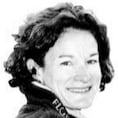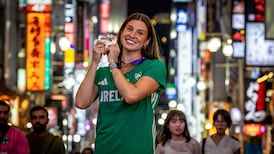As a coach or athlete there is no limit to what one can and needs to learn, and there was ample reminder of that at the Munster Technological University (MTU) track in Cork on Wednesday evening during a sprint hurdles coaching symposium organised by Athletics Ireland.
This was at the instigation of Derval O’Rourke, the former world indoor hurdles champion, and also featured Dublin sprints coach John Coghlan. He coaches Cyréna Samba-Mayela, who won the silver medal in the 100m hurdles at the Paris Olympics, France’s only medal in athletics, and Jasmine Camacho-Quinn from Puerto Rico, the defending champion who won bronze this time.
It would be easy to think a coaching presentation by a sprint and hurdles coach would have a niche market, but for me there was always going to be more to this presentation than the specifics of hurdling, touchdown times, and drills.
When you look at the big picture there’s always going to be some common ground to learn more from a successful coach, no matter the event or sport.
READ MORE
The event at MTU was sold out, with coaches and athletes coming from around the country, eager for just one small nugget to take away and implement as they head into winter training. And what better inspiration could a coach or athlete need than an insight from a coach who works tirelessly to get the best from his athletes and deliver each year on the world and Olympic stages.
Coghlan’s name has been mentioned in several Irish newspaper articles in recent years, many looking on at an Irishman with the Midas touch, helping athletes abroad to bring home championships medals.
As he told us, it was not an overnight success, but years and years of building his coaching skill set, on top of a relentless hunger to learn more from a range of sources.
Starting out as an athlete at the University of Limerick, and also taking on a coaching role among his team-mates, he also knew what it felt like to train the body, and today he is coaching international athletes at his base in Orlando, Florida.
As much as coaches come to a presentation like this looking to learn, they soon realise it always comes back to the basics. On travelling the world, Coghlan found that even though you notice many differences, there were also some standout commonalities. These are the basis of any real successful training programme.
Outside of what training sessions a coach prescribes, the keystone of any good coaching structure is to have a core coaching philosophy that you believe in, and the athlete will buy into.
Any coach also needs to understand each athlete in their group. Even if they compete in the same event, the training can be vastly different. It can be time-consuming to work this out and to get the athletes to trust the coach to devise the right plan.
To do this, mistakes will be made along the way, and Coghlan also spoke about the importance of the communication between coach and athlete, especially as the athlete develops and when there needs to be a shift in responsibility.
When a coach and athlete first work together there is a greater leaning towards the coach taking the lead, the athlete listening to this behaviour-led training. It’s also important for the athlete to learn and understand what they are doing and why they are doing certain training activities throughout the year.
It’s something that resonates with me from my younger days with my first coach, Seán Kennedy, who always gave me the reason behind each training block, not just from a training point but physiologically also. Even though some of the detail was beyond me at the time, it was this grounding that I was presented with as a young athlete that I have carried with me throughout my career and now in coaching and guiding current athletes.
This is an integral part to the development of an athlete. It allows the athlete to grow each year and become more self-reliant, develop greater self-confidence and awareness in their ability. Ultimately, this is what is required to reach the highest level and get the very best from themselves.

















